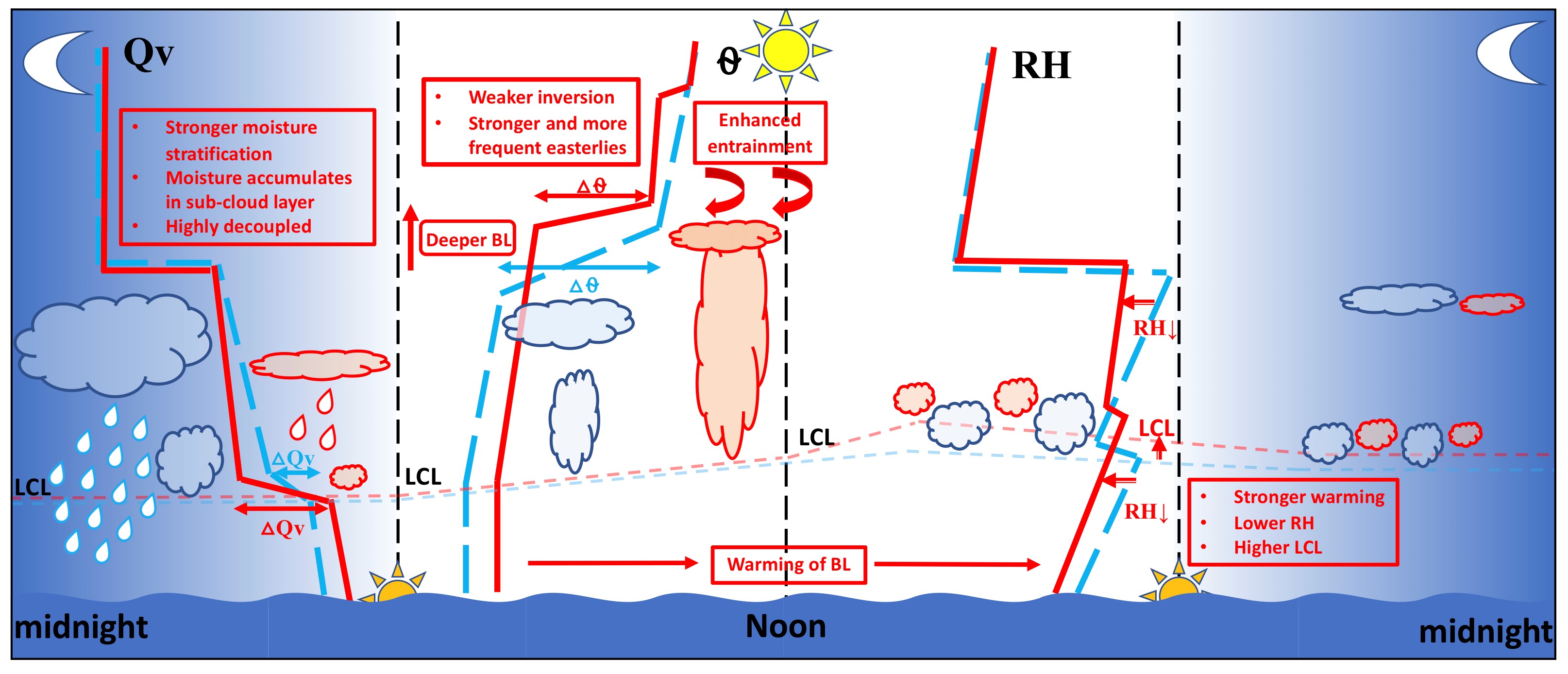LASIC data indicate how enhanced decoupling within a smoky MBL alters the low-cloud diurnal cycle
Submitter
Zhang, Jianhao — NOAA Chemical Sciences Laboratory
Zuidema, Paquita — University of Miami
Area of research
Cloud-Aerosol-Precipitation Interactions
Journal Reference
Science
Surface-based measurements collected at Ascension Island (8° S, 15° W) during August as part of the U.S. Department of Energy Layered Atlantic Smoke Interactions with Clouds (LASIC) campaign indicate the boundary layer remains decoupled throughout the night, building up moisture near the surface. The moisture is ventilated upwards after sunrise, supporting cloud development, before further absorption of sunlight in the afternoon dries the cloud layer.
Impact
The southeast Atlantic is home to one of the world’s largest subtropical stratocumulus decks. These radiatively cool the Earth’s climate. The presence of smoke within the boundary layer reduces the radiative cooling of the aerosol-cloud system, in contrast to when the smoke overlies the low clouds. The change to the diurnal cycle is subtle, providing a new modeling challenge.
Summary
The paper analyzes surface-based measurements collected during the two Augusts of the LASIC campaign; August is when the highest loading of black carbon is detected within the remote southeast Atlantic boundary layer. The diurnal-mean liquid water path and low-cloud fraction are reduced when more smoke is present, most evident in the afternoon when the dissipation of the upper-level stratiform clouds is strongest. A new finding is that the decoupling of the boundary layer continues into the night, helping to trap moisture in the sub-cloud layer. After sunrise, the moisture can ventilate upwards, supporting more vigorous convection. We hypothesize the ascent is radiatively driven, ending when the upper part of the boundary layer warms further as the day wears on. The diurnal cycle is a useful model metric that can ultimately foster skill in simulations of the stratocumulus-to-cumulus transition and low-cloud behavior under future climate scenarios.


